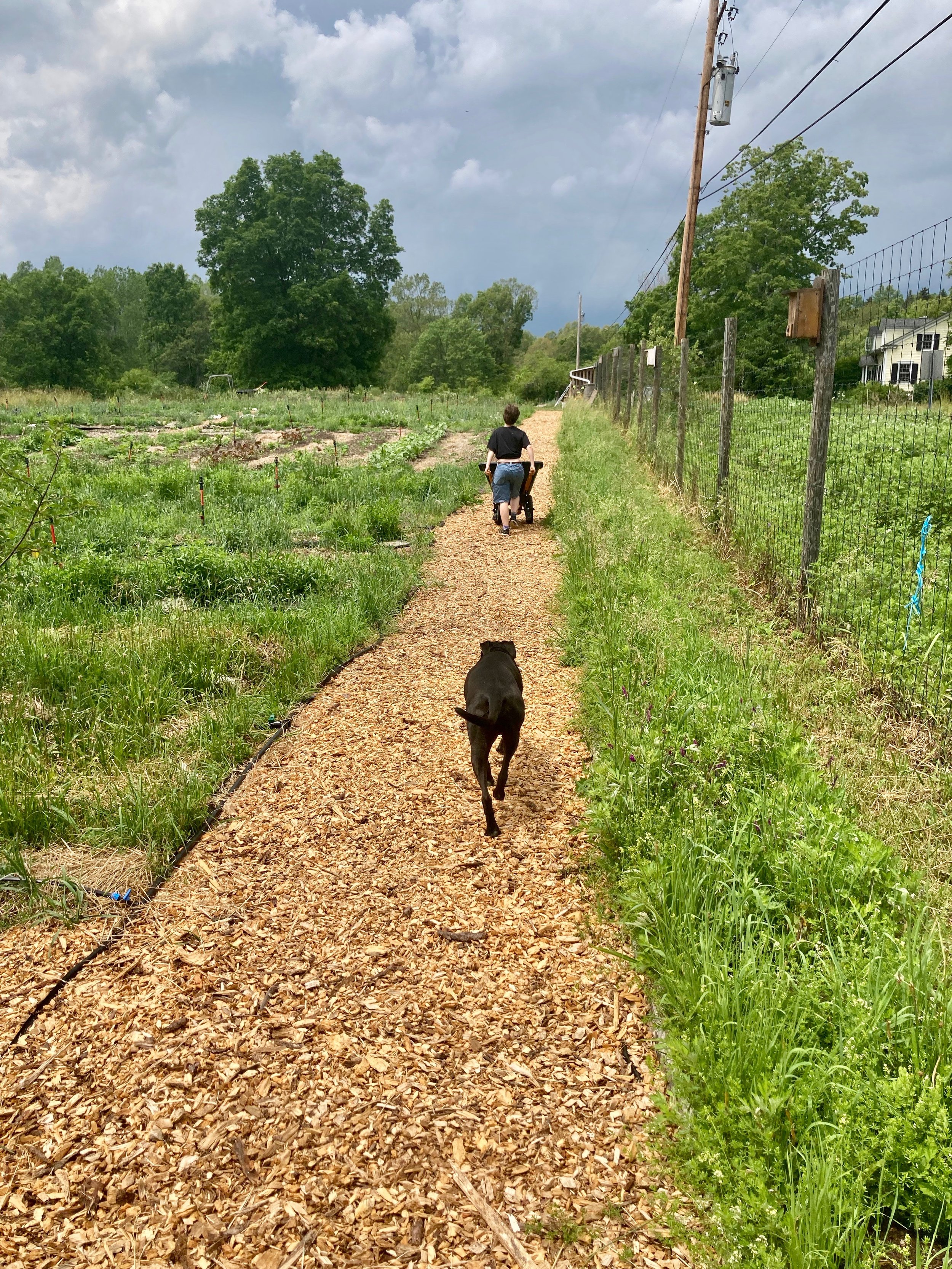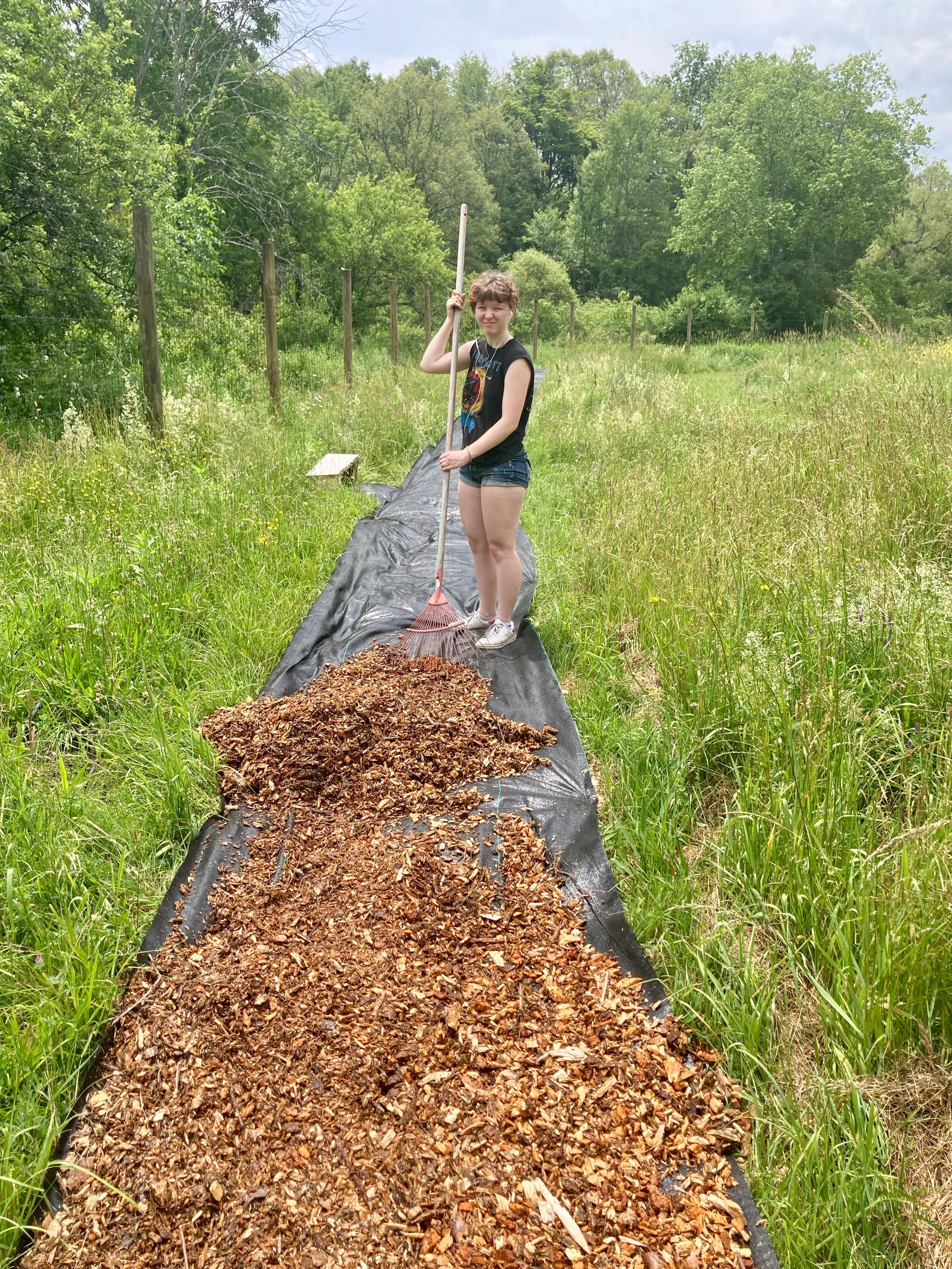Making Paths
Farmer Jess standing on a path.
This past Wednesday I interrupted Jess, Lonely Worm Farm’s Director of Agriculture, as he worked in the field to ask him some questions about the way he farms. Listening to my recording is lovely, as birds are singing almost continuously in the background. Here is the part, a bit condensed and edited, about path making.
Me: So Jess, what are you doing today?
Jess: Making paths. Creating a very specific place for your feet to go is good for the mind. You don’t have to think so much and get lost, so to speak. It also concentrates your energy and reduces the impact on the total land. If you know where the path is and stick to it, everywhere else benefits. The soil stays loose and does not get compacted by your feet or other feet that come on the land.
Me: Why put this path here, and not say, over there, by that bush?
Jess: Paths are one of the first things to think about when you are reading the landscape.Trying to figure out where the paths should be, or where they already are, and where the flows are–
Me: Flows?
Jess: Water flows, animal flows, plant flows, wind flows. Flows are patterns that show up in nature. For instance, I was excited when I first came here to notice a spot in the southeast part of the field where there was a type of grass growing that wasn’t growing anywhere else. It clued me into a wet zone. While the whole fence line along the bottom is wet, there is this specific area that is different than everywhere else, wetter. So I made a pocket for this flow to exist. In some ways, this is a key to the whole hill. I dug a trench line that navigates from the top part of the hill, all the way down to this part and dug a little hole for the water to gather. In the future there will be a little pond, which will create another flow.
Me: So you understand the way the water flow works, and then you design around that?
Jess: Yes. Once you understand certain flows, if you lean into them, they give you more information, and you can keep working in collaboration with the information you are getting. Understanding flows is really important. Last year I studied the flows to figure out where the paths should be, like a pretty good guess, then it became more of a finished thought this year. Now Happy and Miranda are helping to create them.
Me: How?
Jess: We are putting landscaping fabric down, then mulch. Once you know the path, there are multiple ways to maintain it. Primarily, just walking the path is the way, but in a garden it’s nice to have other support.
Me: Plus we want to have wheelchair accessibility.
Jess: Exactly, and so the paths need to be a little bit more maintained.
Me: And the mulch you are using, the woodchips–I remember you had a story about that.
Jess: There was a farm that had the most woodchips I’ve ever seen… I visited and talked with the farmer. When you were walking his garden, it felt like you were walking on a sponge. That let me know a couple things. One, the woodchips kept the ground really buoyant. And two, buoyancy leads to communication. In this specific case, the information was carried by fungi. Paths of woodchips are not just for humans; they are also paths for fungi to communicate. Because mycorrhizae can spread 250 feet underground, if you design the paths right, you have the mycorrhizae touching the whole land. That makes for a lot of fingers on the land; the whole land is communicating with itself.
So that’s the plan, folks: human and mushroom connections. Stay tuned for why the grasses are allowed to grow so high…



